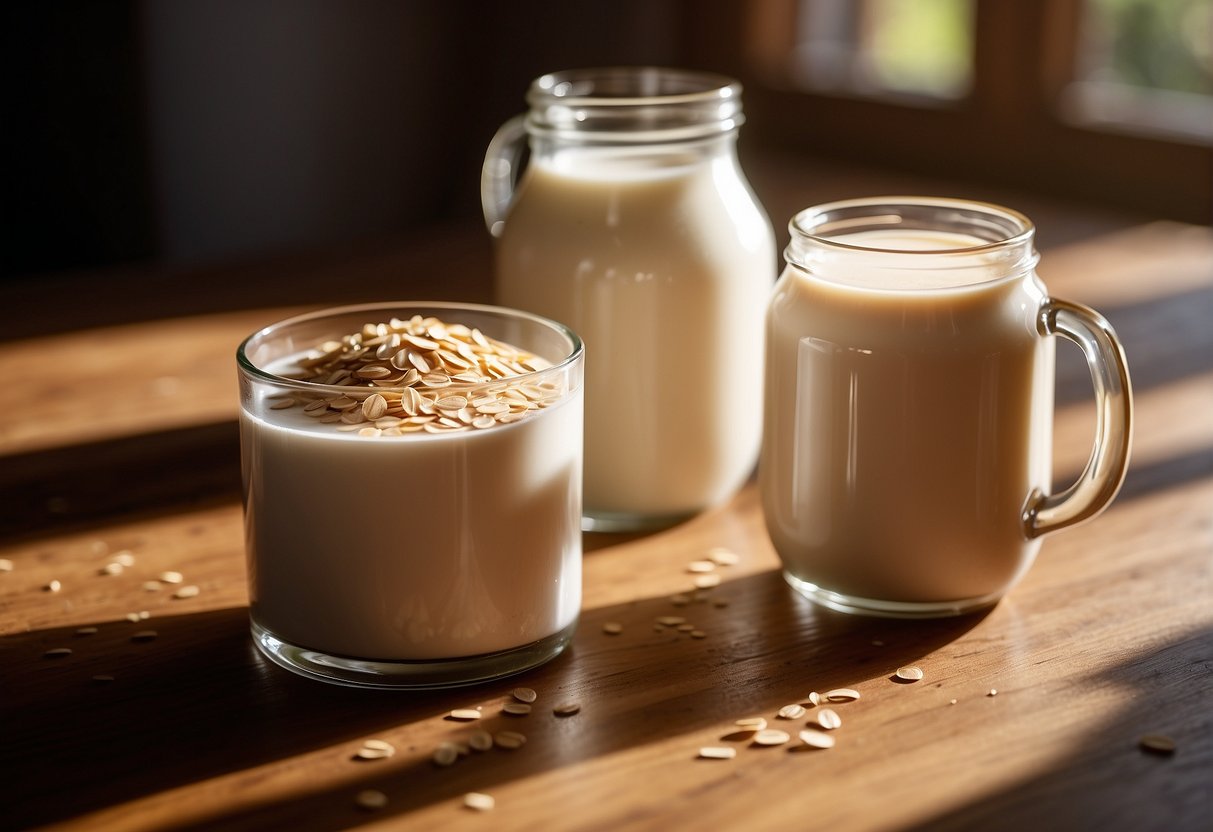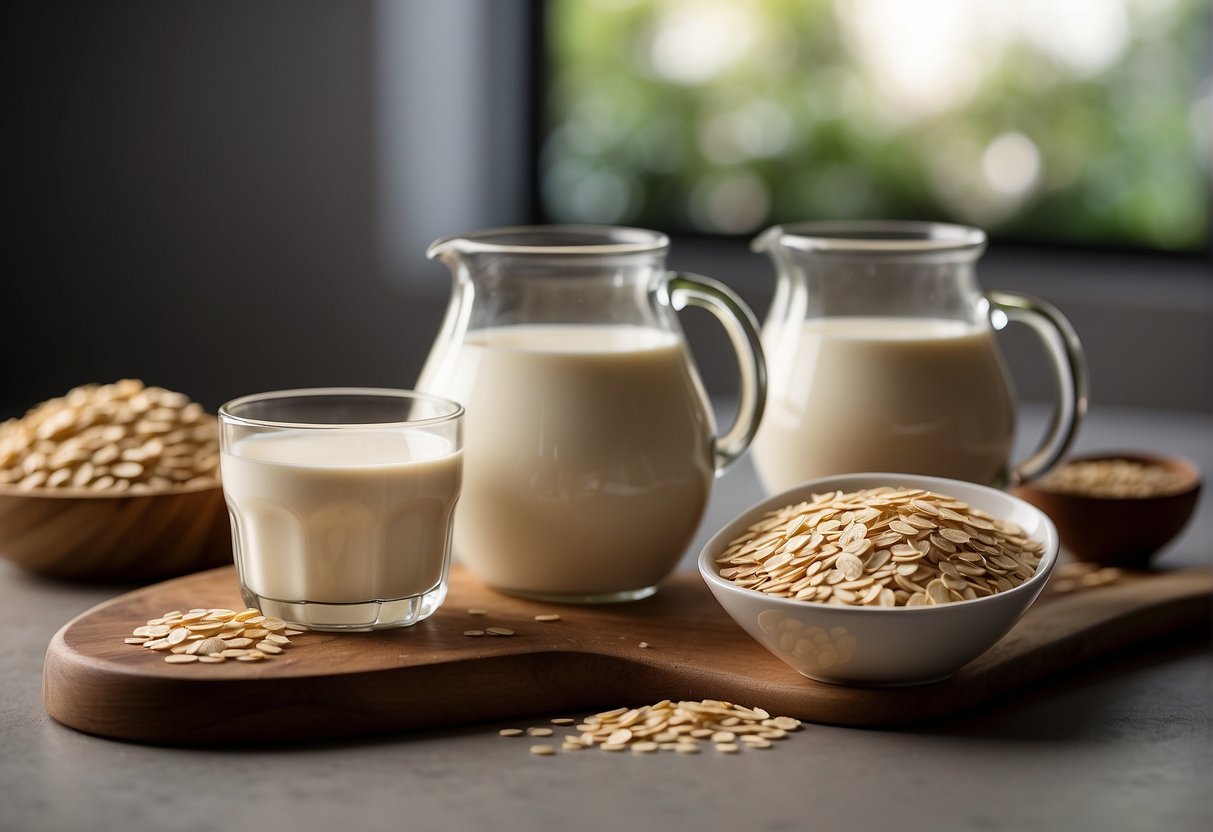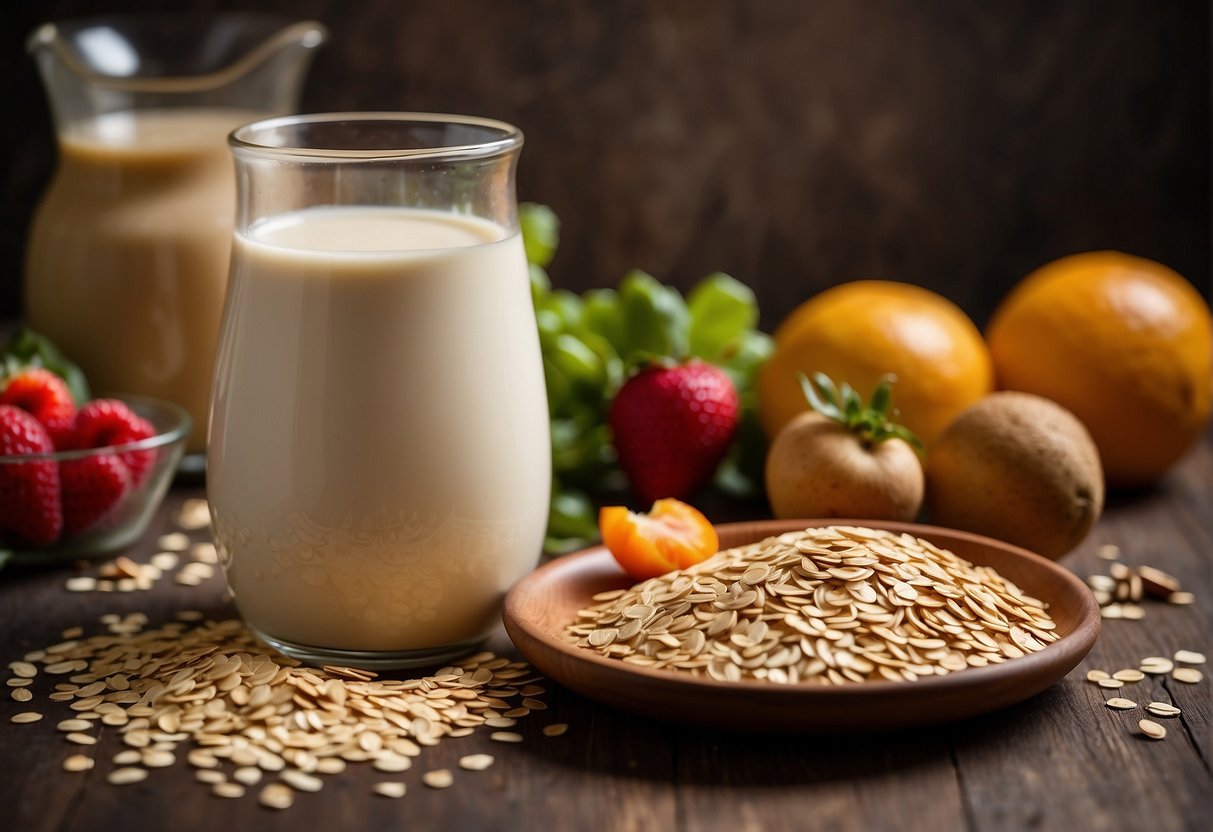Choosing between oat milk and oat milk creamer can be a puzzling decision for consumers looking for dairy-free alternatives. Oat milk is a popular plant-based milk substitute made from oats and water, offering a creamy texture and a slightly sweet, oaty flavor. Its rise in popularity is attributed to its environmental benefits and suitability for people with dietary restrictions. People often use it as a beverage, in cereal, or in cooking, as it’s a versatile dairy alternative.

Oat milk creamer, on the other hand, is designed specifically to enhance the coffee experience. It is typically thicker and richer than traditional oat milk, making it a favorite for those who desire to add a smooth, creamy texture to their coffee without the use of dairy. Some oat milk creamers also come in flavored varieties, providing additional options for those looking to mix up their morning routine.
When considering oat milk or oat milk creamer, it’s essential to note the differences in their formulation. Creamers might contain additional ingredients to achieve the desired consistency and flavor profile for coffee. In contrast, regular oat milk is often kept simpler to maintain versatility. Both share the advantage of being plant-based and dairy-free; however, which option one chooses may depend on personal taste preferences and how they intend to use it.
Comparing Oat Milk and Oat Milk Creamer
https://www.youtube.com/watch?v=Xf6hbdROAhE&embed=true
In choosing between oat milk and oat milk creamer, consumers typically consider factors like fat content, calories, and how they integrate into various beverages and dishes.
Definition and Basic Differences
Oat milk is a plant-based alternative to conventional dairy milk, often produced by blending water and oats and then straining the liquid. It is favored for its mild, slightly sweet taste and its suitability for those who are lactose intolerant or following a vegan diet. In contrast, oat milk creamer is designed to be richer and thicker, usually achieved by blending oats with oils such as coconut oil. This product specifically aims to mimic the creaminess and texture of traditional dairy-based creamers, making it an ideal addition to coffee and tea.
Nutritional Profile
The nutritional content of oat milk and oat milk creamer varies significantly due to their differing purposes:
| Nutrient | Oat Milk | Oat Milk Creamer |
|---|---|---|
| Calories | Lower | Higher |
| Fat | Lower, often without added oil | Higher, often contains added oil |
| Saturated Fat | Minimal | May contain more due to added oils |
| Carbohydrates | Higher due to the natural sugars in oats | Often higher, may have added sugars |
| Protein | Moderate | Varied, some are higher in protein to improve texture |
| Fiber | Present, amount varies | Present, may be less visible due to processing |
| Calcium & Vitamin D | Often fortified | Typically fortified |
| Sugar | Naturally occurring, some brands add more | Likely to contain added sugars for taste |
Uses in Beverages and Cooking
Oat milk is versatile, used in the same way dairy milk would be: poured over cereal, mixed into smoothies, or as a base in sauces and baked goods. Its consistency is close to that of cow’s milk, which makes it suitable for a broad range of uses. On the other hand, oat milk creamer is specifically tailored for coffee and tea due to its creamy texture that withstands high temperatures without curdling. It is also a favored option for those who prefer a richer, more velvety consistency in their beverages. While it can be used in cooking, its higher fat content may alter the desired outcome of recipes designed for the thinner consistency of regular oat milk. Both options are lactose-free, appealing to those with lactose intolerance or dietary preferences that exclude animal products.
Taste and Texture Analysis

In this analysis, the distinct differences between oat milk and oat milk creamer are dissected. It mainly focuses on their flavor profiles, consistency, and how each fares in frothing, which is especially important for preparing beverages like coffee.
Flavor Profiles
Oat milk is known for its slightly sweet taste and a hint of nuttiness, which derives from the base oats. It is often considered to have a flavor that is more akin to dairy milk than other plant-based alternatives. In contrast, oat milk creamer, designed to be richer, can have additional flavors and sweeteners to enhance its taste, making it a preferred choice for those seeking a more flavorful addition to their drinks.
Consistency and Mouthfeel
Regarding texture, oat milk strikes a balance between light and creamy, making it smooth enough for general use in cereals and beverages. Oat milk creamers are typically thicker due to the inclusion of oils, presenting a creamier texture ideal for those who desire a richer mouthfeel. This difference is intentional to mimic the body and consistency of traditional dairy creamer.
Suitability for Frothing
When it comes to frothing, the outcomes differ significantly between oat milk and its creamer counterpart. Regular oat milk can create a decent froth, excellent for a light foam in lattes and cappuccinos. Oat milk creamers, however, often offer a more stable and rich froth, due to their higher fat content, which is conducive to creating a dense, luxurious foam, very much desired in coffee art.
Health and Dietary Considerations

When comparing oat milk to oat milk creamer, it’s essential to consider their impact on health and dietary needs. While they share a base ingredient, their nutritional profiles and suitability for various sensitivities can differ significantly.
Allergens and Sensitivities
Dairy-free and Vegan: Both oat milk and oat milk creamer are dairy-free and suitable for those following a vegan diet. They serve as plant-based alternatives to traditional dairy products.
Gluten-Free: While oats are naturally gluten-free, there is a risk of cross-contamination during processing. Individuals with celiac disease or gluten sensitivities should verify that the oat milk or creamer they purchase is certified gluten-free.
Nut Allergies: For those with nut allergies, oat milk and creamer offer a safe alternative to nut-based milks. They do not contain nuts and are typically produced in facilities without the risk of cross-contamination with nut allergens.
Benefits of Oat Milk in Diet
Heart Health: Oat milk provides a heart-healthy option, as it can be high in fiber and low in saturated fats. This may contribute to better heart health when included as part of a balanced diet.
Nutritional Content: Oat milk is often fortified with vitamins and minerals such as calcium and vitamin D, making it a healthy addition to one’s diet, particularly for those who do not consume dairy. However, the creamer versions may be higher in calories and sugars, so it’s important to read the labels carefully.
Environmental Impact
The ecological footprint of plant-based milk alternatives like oat milk and oat milk creamer is a crucial component to consider when assessing their overall sustainability.
Sustainability of Oat Milk Production
Oat milk and its creamers are generally recognized for their lower environmental impact, especially when compared to dairy alternatives. Oat milk production demands considerably less water. For instance, producing a liter of oat milk typically requires about 48 liters of water, which is a fraction of what is essential for dairy or other plant-based milks, like almond. Furthermore, the carbon dioxide emissions associated with oat milk are only 0.18 kilograms for a standard 200 milliliter serving. This relatively minimal environmental footprint makes oat milk a more sustainable choice for consumers and Planet Oat, the world they live in, and the health of the environment.
Varieties and Availability
The oat milk market has diversified, offering a wide range of options from flavored coffee creamers to unsweetened varieties. Consumers can choose between convenient store-bought versions and customizable homemade alternatives.
Brands and Options in Market
- Brands: A plethora of brands have entered the oat milk arena, with Natural Bliss and Oatly leading the pack for their quality and range. There are others that cater to different tastes and dietary needs, including organic options.
- Unsweetened vs. Sweetened: Consumers can find oat milk in both unsweetened and sweetened forms. The former appeals to those looking for a low-calorie alternative to dairy, while the latter caters to a sweeter palate.
- Flavored Coffee Creamers: Various brands have expanded into flavored coffee creamers, specifically crafted to enhance hot beverages without overpowering them.
- Availability: These products are widely available in grocery stores, ranging from small natural food shops to major supermarket chains.
Homemade vs. Store-Bought
- Store-Bought: For those seeking convenience, store-bought oat milk is readily accessible. It comes in various options such as barista blends, optimal for frothing, and creamers designed for use in coffee and tea.
- Homemade Creamer: Making oat milk or creamer at home allows for full control over ingredients, catering to the preference for natural and organic products. Homemade methods can offer a fresher taste and the option to adjust sweetness or flavors as desired.
Practical Tips for Consumers
When choosing between oat milk and oat milk creamer, consumers should pay attention to labels for ingredients and nutritional value, consider how these products behave in culinary applications, and select the product that fits their dietary and lifestyle needs.
Reading Labels and Understanding Ingredients
It’s imperative for consumers to read labels carefully to understand what they’re ingesting. Oat milk typically contains oats, water, and sometimes added vitamins and minerals. When examining oat milk creamers, individuals should be aware of added sugars, gums, and stabilizers that can affect the texture and taste. If a dairy-free alternative is needed, one should ensure that the product is explicitly marked as such, as some creamers could contain dairy derivatives.
Tips for Cooking and Baking
For those who are enthusiastic about cooking and baking, understanding how these alternatives function in recipes is crucial. Oat milk can often be used as a 1:1 substitute for dairy milk, making it a versatile and nutritious option. However, oat milk creamer is often thicker and may contain oils for richness, which can alter the outcome of a recipe.
- Baking: Use oat milk in place of dairy milk for a slightly sweeter taste and tender crumb.
- Cooking: Oat milk creamer can add creaminess to soups and sauces but watch for added oils that may affect the dish’s health profile.
Choosing the Right Product for Your Needs
To find the most suitable product, consumers must consider their taste preferences and health requirements. Those monitoring their sugar intake should look for products labeled “Unsweetened/Zero Sugar”. If convenience is a priority, “Shelf-Stable” oat milk that lasts for months unopened may be ideal, as mentioned in Different Types & Flavors Of Oat Milk Explained. When seeking a condensed, richer alternative for coffee, one might try an oat milk creamer as outlined in What Is Oat Milk Creamer? It’s also worth noting that specific brands will provide differing taste and consistency experiences, so one may need to try several to find their preferred choice.
